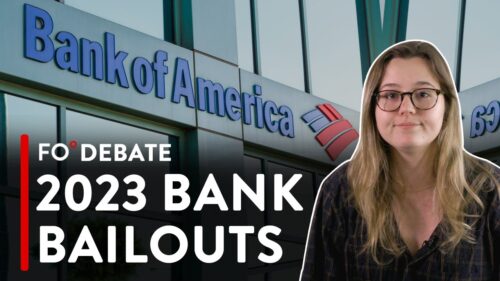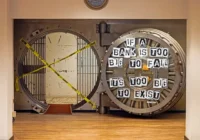There was a time when analysts dubbed bank depositors “sleepy” because they typically wouldn’t rush to grab a better deal. But in recent years, they are shaking off that inertia. With newfound alacrity, they are moving deposits to take advantage of better interest rates or hedge against interest rate risks.
Driving that “depositor alertness” is faster bank processing of transactions made possible with more efficient payment technology, according to a new paper by experts at Wharton and elsewhere titled “The Making of an Alert Depositor: How Payment and Interest Drive Deposit Dynamics.”
The paper traced the evolution of bank depositors from a sleepy state to becoming more alert. Banks rely on low-cost and stable deposits; they make up more than 80% of the liabilities of an average US bank. Most depositors were unresponsive to changes in the value of the bank assets. But the 2023 regional banking crisis was a wake-up call: Silicon Valley Bank went belly up and the ripple effects were felt across regional banks.
In fact, depositors were shown to be more sensitive to the financial health of their banks, interest rates, ease in transferring money with technology aids, and service quality. The paper described “a new portrait of depositors: depositors may become ‘flighty,’ particularly for banks with better service quality and during times of increased interest rate risk.”
Depositor inertia and the market power of banks
Depositor inertia, or inattentiveness, and the market power of banks are the main reasons why people have traditionally stuck with their banks, according to Wharton finance professor Yao Zeng, who co-authored the paper with Xu Lu and Yang Song at the University of Washington.
“Most retail depositors don’t keep a huge amount of money in their banks and are covered by deposit insurance, so they are not super worried about their bank’s financial health,” Zeng said. That is especially true with depositors in rural areas where large banks do not have as many branches, and the only options are local community banks, he noted.
Most large banks also derive market power with their branch network and online banking facilities, which they can use to offer low interest rates on deposits, Zeng continued. “Even if your bank offers you a zero-interest rate on your deposits, you’re not that unhappy, and you’re probably fine parking your money there.”
Traits of the newly alert depositor
But now, depositors move their money across bank accounts more actively when the payment technology linked to their accounts is more efficient and when they face higher interest rate risk, the paper stated. Specifically, their alertness is “particularly pronounced during periods of rate hikes but diminishes when rates fall.” Faster payment technologies reduce transfer frictions, which in turn heightens depositor alertness.
Payment frictions, such as delays in transferring money, have long been a sore point with depositors. But the growth of fintech firms in recent years has changed that and made people less dependent on their banks. Payment apps like Zelle, Venmo, PayPal and Cash App have made it easier for depositors to send money to family and friends or pay for purchases, Zeng explained. “Fast payment technology has specifically led to higher depositor awareness.”
Banks, however, face a paradox when they embrace those new payment technologies, Zeng pointed out. “If a bank offers faster payment technologies, that will make its depositors happier. But that also means that thanks to the higher payment convenience depositors tend to move money more actively between your bank and other banks.”
Scope of the study and key findings
In their study, Zeng and his co-authors delved into questions like how alert have depositors become, which economic factors command depositors’ alertness and how that alertness might influence their financial outcomes.
The authors analyzed novel transaction-level data from over a million US depositors at 1,400 banks and credit unions between 2013 and 2022. Zeng shared specific insights into their findings:
- One fewer day of delay is associated with $239–$321 more inter-bank deposit transfers in a month. That accounts for 20%–30% of the total monthly deposit transfers by the median American depositor.
- One fewer day of transfer delay is associated with roughly $89 more monthly consumptions for an average American depositor. “This effect is economically important because it is solely driven by depositors’ banks processing payments and transfers faster; these depositors effectively become ‘richer’ despite their income not changing at all,” Zeng said.
- When bank deposits become a worse store of value in the sense that interest rate risk is higher, depositors move money more actively across their bank accounts. When the MOVE index, an index that measures the volatility of the bond market, increases by one standard deviation, inter-bank deposit transfers tend to increase by $15–$20 more, suggesting that depositors have become more alert.
Contours of depositor alertness
The study tracked patterns in changing depositor behavior on several fronts. One is a new metric it designed called “deposit turnover,” which measures the total dollar amount that a depositor transfers across her bank accounts within a given period. Another metric captures transfer delays in conventional banking channels, while a third measure looks at how sensitive depositors are to changing interest rates. “Higher interest rate fluctuations lower the appeal of deposits as secure value storage,” the paper noted.
Efficient payment technology which enables faster transfers is a big factor that encourages depositors to shift their deposits more actively between accounts. Faster payment technologies also help boost economic activity. Depositors who use debit cards or bank accounts for more than 90% of their spending increase their consumption when transfer delays are reduced.
Depositor alertness is high also when facing heightened interest rate risk. In order to mitigate that interest rate risk, depositors tend to move their deposits more actively between accounts instead of keeping them in one place. They get more restive when they face delays in transferring funds between banks because delays mean higher risks in experiencing late fees and overdraft fees when managing their own floating-rate mortgages or auto loans.
These findings have significant policy implications, especially as they relate to the impact of changing depositor behavior on bank funding costs and risks. Those changes are set against the backdrop of rapid developments in new payment technologies and during times of monetary tightening. “The temptation of offering better payment technologies to compete for depositors versus improving liquidity management to handle interest rate risks presents a tough choice to bankers,” said Zeng.
The views expressed in this article are the author’s own and do not necessarily reflect Fair Observer’s editorial policy.
Support Fair Observer
We rely on your support for our independence, diversity and quality.
For more than 10 years, Fair Observer has been free, fair and independent. No billionaire owns us, no advertisers control us. We are a reader-supported nonprofit. Unlike many other publications, we keep our content free for readers regardless of where they live or whether they can afford to pay. We have no paywalls and no ads.
In the post-truth era of fake news, echo chambers and filter bubbles, we publish a plurality of perspectives from around the world. Anyone can publish with us, but everyone goes through a rigorous editorial process. So, you get fact-checked, well-reasoned content instead of noise.
We publish 2,500+ voices from 90+ countries. We also conduct education and training programs
on subjects ranging from digital media and journalism to writing and critical thinking. This
doesn’t come cheap. Servers, editors, trainers and web developers cost
money.
Please consider supporting us on a regular basis as a recurring donor or a
sustaining member.
Will you support FO’s journalism?
We rely on your support for our independence, diversity and quality.










Comment